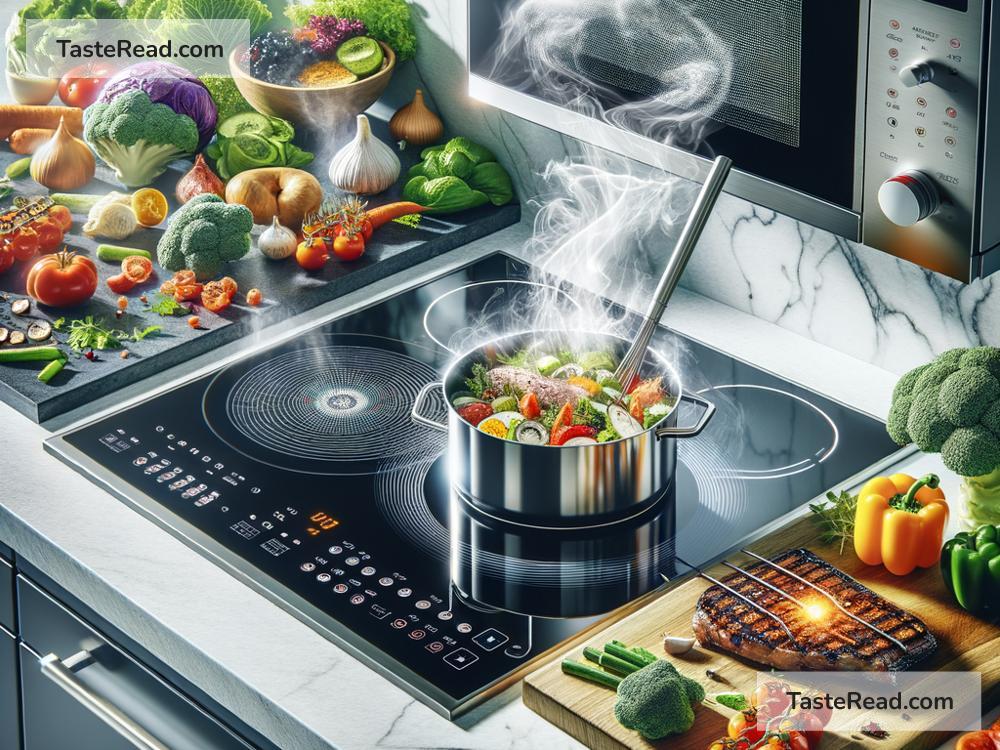The Science of Cooking with Electromagnetic Waves: Techniques and Tips
Cooking is an art and a science. While many of us enjoy using traditional tools like stoves and ovens to prepare our meals, modern technology has introduced ingenious ways to cook food faster and more efficiently. One of these methods involves the use of electromagnetic waves. It may sound complicated, but when you break it down, it’s a fascinating and easily understandable concept.
What are Electromagnetic Waves?
Before diving into cooking, let’s briefly talk about electromagnetic waves. These are invisible waves of energy that travel through space. They’re everywhere around us and are used in radios, cell phones, microwaves, and even light bulbs. Electromagnetic waves include everything from X-rays to visible light, but when it comes to cooking, the most relevant types are microwaves and infrared waves.
Microwaves and infrared waves are part of the electromagnetic spectrum. They can interact with food by transferring energy, causing the food to heat and cook. Unlike flames or hot metal surfaces, electromagnetic waves heat food differently—by exciting the water molecules or directly heating the surface.
How Do Electromagnetic Waves Cook Food?
When you think of cooking with electromagnetic waves, the microwave oven is likely the first thing that comes to mind. This appliance uses microwaves, which are short electromagnetic waves, to cook food. Here’s how it works:
-
Exciting Water Molecules: Microwaves specifically target water, fat, and sugar molecules in food. These molecules absorb the microwave energy and start vibrating rapidly. As they vibrate, they generate heat, which cooks the food. This is why microwave cooking is faster—it heats food from the inside out rather than relying on external heat sources.
-
Infrared Waves: Infrared waves, which are used in devices like broilers and toasters, work differently. These waves heat the surface of food by transferring energy directly to it. For example, when you toast bread or broil a steak, infrared radiation creates a browned, crispy surface.
Both microwave ovens and infrared cookers use electromagnetic waves to prepare food efficiently, while keeping flavors intact.
Benefits of Cooking with Electromagnetic Waves
Cooking with electromagnetic waves comes with several advantages:
-
Speed: Microwaves cook food much faster than conventional ovens because they heat the food molecules directly. This is particularly helpful when you’re short on time.
-
Energy Efficiency: Cooking with microwaves uses less energy than a gas stove or oven, making it an eco-friendly choice.
-
Even Heating for Some Foods: Microwaves can heat liquids and certain dishes evenly, preventing the food from becoming too hot in one spot and cold in another.
-
Versatility: Infrared cooking methods, such as grilling or broiling, allow chefs to experiment with creating textures and flavors that are difficult to achieve with other options.
Techniques for Cooking with Electromagnetic Waves
Using electromagnetic waves for cooking involves more than just pressing a few buttons on your microwave. Here are some techniques to elevate your cooking:
-
Understanding Microwave-Friendly Ingredients: Since microwaves rely on water, it’s essential to cook foods with enough moisture. This includes vegetables, soups, rice, and proteins like chicken or fish. Foods that are dry or tough won’t perform as well.
-
Cover Food Properly: Covering dishes with microwave-safe lids or plastic wrap allows steam to circulate inside the microwave, promoting even cooking while also retaining moisture.
-
Stirring Matters: When reheating liquids, stews, or casseroles in the microwave, stirring midway ensures even heating and prevents hot spots.
-
Using Infrared for Texture: If you’re using infrared waves to cook, like with a broiler, focus on cooking techniques that require crisping, searing, or browning. Broil the top of casseroles for an appetizing crust, or sear steaks for a flavorful outer layer.
-
Microwave in Short Intervals: For delicate foods like eggs or chocolate, microwave in short intervals rather than long continuous blasts of heat. This prevents overcooking or burning.
Tips for Safe Cooking with Electromagnetic Waves
Safety is important when working with electromagnetic appliances like microwave ovens or infrared cookers:
-
Use Microwave-Safe Materials: Only use glass, ceramic, or microwave-safe plastics. Metal containers can cause sparks and damage your microwave.
-
Check Food Temperature: Microwaved food can have uneven heat. Stir liquids or check the center of solid dishes to ensure they’re fully cooked.
-
Don’t Overcook: Microwaves can overheat food quickly, causing it to become dry or rubbery. Monitor cooking times carefully.
-
Avoid Steam Burns: Be cautious when opening covered dishes, as hot steam can rush out and burn your hands.
-
Proper Maintenance: Clean your microwave regularly to prevent food residue from disrupting its efficiency.
Fun Fact: Microwave Myths and Truths
Some people believe microwaves “zap” nutrients out of food, but this is largely a myth. In fact, microwave cooking can preserve nutrients better than boiling or frying because it cooks food quickly and uses less water, which prevents nutrient loss. So feel free to microwave your veggies!
Experiment and Enjoy
Cooking with electromagnetic waves opens the door to exciting possibilities in the kitchen. From quick meals to gourmet creations, you can harness this science to save time, experiment with new textures, and even reduce energy use. So the next time you heat up leftovers or grill a steak, take a moment to appreciate the remarkable technology behind these invisible waves.
Electromagnetic waves aren’t just technical jargon—they’re a practical, magical tool for everyday cooking!


